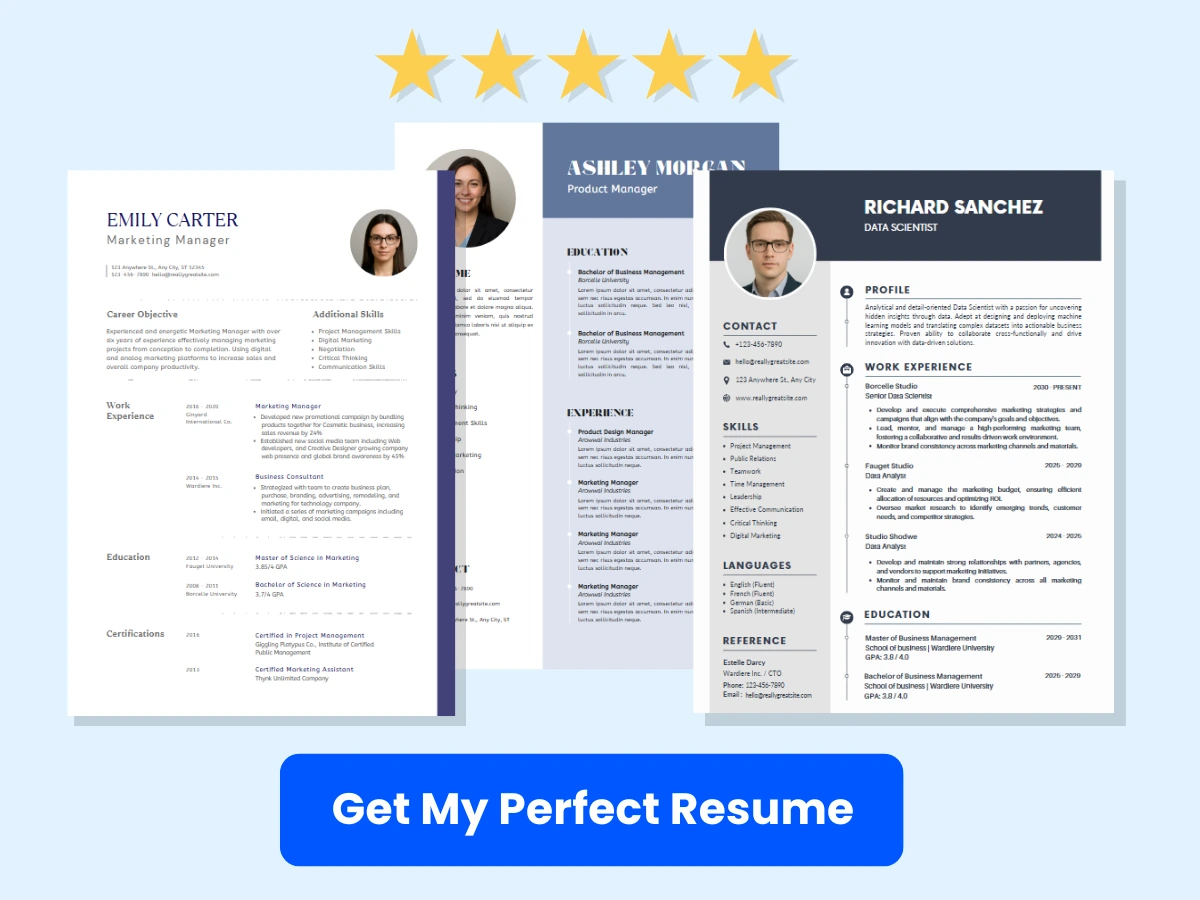In today’s fast-paced and health-conscious world, the demand for personal trainers has never been higher. Personal trainers not only help their clients achieve their health and fitness goals, but they also motivate them and provide them with the necessary knowledge and skills to maintain a healthy lifestyle.
However, in order to stand out in this highly competitive field, it’s crucial to have a well-crafted and impressive personal trainer resume. Your resume should not only showcase your skills and accomplishments, but it should also effectively communicate your passion for fitness and your ability to inspire and guide others.
This article is designed to provide you with tips and advice on how to create a winning personal trainer resume. Whether you’re just starting out in the industry or you’re a seasoned pro, this article will give you the knowledge and tools you need to take your career to the next level.
Key Components of a Personal Trainer Resume
In this section, we’ll take a close look at the key components of a personal trainer resume. This includes your contact information, objective statement, skills summary, work experience, education and certifications, and any additional sections that can help you stand out from the competition.
Personal Trainer Resume Samples
To help you get started, we’ve included several personal trainer resume samples for you to review. These samples are designed to give you an idea of how to structure and format your resume, as well as what information to include in each section. We’ve also provided a helpful analysis of each sample, pointing out its strengths and areas for improvement.


Writing Tips for a Personal Trainer Resume
In this section, we’ll provide you with some tried-and-true writing tips to help you create a polished and professional personal trainer resume. These tips cover everything from how to highlight your achievements to how to tailor your resume to a specific job posting.
Conclusion
Creating a winning personal trainer resume is essential for anyone looking to build a successful career in the health and fitness industry. By following the tips and advice in this article, you’ll be well on your way to crafting a powerful and effective resume that will help you stand out from the crowd.
Personal Trainer Resume Overview
When it comes to landing a job as a personal trainer, your resume plays a critical role in the process. Your resume acts as a marketing tool that showcases your skills, experience, and qualifications to potential employers. It is important to note that while your fitness certifications and experience are essential, your resume should be visually appealing and well-formatted to make a strong first impression.
Purpose and Format
The purpose of a personal trainer resume is to highlight your fitness expertise, showcase your education and certifications, and detail your relevant work experience. Your resume should be concise, easy to read, and formatted in a way that makes it easy for potential employers to identify your qualifications quickly.
Key Sections
A well-crafted personal trainer resume should include the following key sections:
1. Contact Information
Your contact information should be clearly visible at the top of your resume. It should include your name, phone number, email address, and, if applicable, your social media handles.


2. Professional Summary
This section provides an overview of your qualifications and introduces you to potential employers. It should be written in a concise and compelling manner that highlights your strengths as a personal trainer.
3. Education and Certifications
This section should highlight your formal education, fitness certifications, and any relevant training you have received. Be sure to include the name of the institution, the degree or certification received, and the date of completion.
4. Work Experience
Your work experience section is where you highlight your relevant experience as a personal trainer. Be sure to include the name of the establishment, your job title, and the dates of employment. Additionally, include a bulleted list of your accomplishments and responsibilities while on the job.
5. Skills
Detail any additional skills or abilities you possess that would make you a valuable asset to a fitness establishment. Examples of skills you should include are leadership ability, team building, and any other related work capabilities.
General Tips for Creating an Effective Personal Trainer Resume
-
Keep it clear and concise. Your resume should be no longer than one page.


-
Focus on results. Use numbers and statistics to showcase your achievements as a personal trainer.
-
Customize your resume. Tailor your resume to the job you are applying for, making sure to highlight how your qualifications meet the job requirements.
-
Make it visually appealing. Use an appropriate font and formatting to make your resume aesthetically pleasing and easy to read.
-
Proofread. Double check your resume for any spelling or grammatical errors.
By following these tips and crafting a well-formatted resume, you can increase your chances of landing your dream job as a personal trainer.
Personal Trainer Resume Sample
As a personal trainer, having a well-crafted resume is essential. Your resume is the first thing potential clients or employers will see, and it needs to convey your skills and experience effectively. In this section, we’ll provide a comprehensive personal trainer resume example that you can use as a guide for building your own. We’ll also break down each section and its purpose, and provide tips for tailoring the sample to fit your experience and qualifications.
Personal Trainer Resume Example
Breakdown of Each Section and Its Purpose
Objective
Your objective statement should be a brief summary of your career goals and what you can offer the employer. It should convey your passion for the fitness industry and emphasize your desire to help clients achieve their fitness goals.


Certifications
Your certifications section should list all the relevant certifications you hold. This section is important since it shows that you have met or exceeded industry standards for personal trainers. It’s also a good idea to include any other relevant licenses or certifications, such as nutrition certification or group fitness instruction.
Education
Your education section should list your degree(s) and the university you attended. You should also include relevant coursework that demonstrates your knowledge and expertise in the fitness industry.
Experience
Your experience section is the most important part of your personal trainer resume. This is where you demonstrate your skills and expertise by listing your work history, job duties and achievements.
Personal Trainer Resume Writing Tips
When it comes to creating a personal trainer resume, it is important to keep in mind that the fitness industry is highly competitive. Therefore, upon writing your resume, you want to make sure it stands out from the competition by capturing the reader’s attention and highlighting the qualities that make you a great candidate for the job.
Outlined below are key writing strategies for a personal trainer resume:
Key Writing Strategies for a Personal Trainer Resume
-
Start with a strong headline: The first thing that the recruiter or the hiring manager sees is your headline. It should be an eye-catching statement that sums up your expertise and the benefits you bring to the table.


-
Showcase your fitness certifications: In this industry, it is essential for you to have relevant certifications. Highlight them prominently to ensure that the recruiter or hiring manager knows that you are a certified personal trainer.
-
Emphasize your experience: Talk about your expertise and overall experience, emphasizing your accomplishments as a personal trainer. Include your success stories and how you elevated your clients’ health and fitness levels.
-
Highlight your soft skills: Being a personal trainer involves working closely with clients. Therefore, it is important to highlight your interpersonal skills such as communication, empathy, and patience.
Tips for Customizing Your Resume for Specific Job Applications
When you are applying for a personal trainer job, it is essential to customize your resume for the specific job application. Listed below are a few tips to do so:
-
Tailor your resume to the job description: Take the time to read the job description thoroughly and tailor your resume to match it. Identify the skills and qualifications that are required for the job and highlight those that align with your experience.
-
Use keywords: Use relevant keywords from the job description to optimize your resume for the ATS (Applicant Tracking System). This will increase your chances of moving forward through the initial screening process.


-
Highlight relevant experience: If you have relevant experience such as working with clients who have similar fitness goals or experience with the training techniques mentioned in the job description, make sure to highlight that experience.
Common Mistakes to Avoid When Crafting Your Personal Trainer Resume
Finally, here are several common mistakes to avoid when crafting your personal trainer resume:
-
Using generic language or overly formal language: Your resume should reflect who you are as a personal trainer, and language that is too generic or formal will not showcase your personality or individuality.
-
Overwhelming the reader with information: Keep your resume condensed and easy to read. Avoid including unnecessary information and lengthy paragraphs.
-
Neglecting to include quantitative data: Including quantitative data such as the number of clients you have trained, the amount of weight they have lost or gained, can add credibility to your accomplishments.


Personal Trainer Resume Summary Example
When it comes to a resume, the summary section is the perfect opportunity to showcase your skills and experiences to potential employers. A good summary can set the tone for the entire document and encourage hiring managers to read on. In the case of a personal trainer, this section is especially important as it can demonstrate your knowledge of the fitness industry and your ability to motivate and guide clients towards their goals.
Purpose and Structure of a Personal Trainer Resume Summary
The main purpose of a personal trainer’s resume summary is to highlight your relevant experiences and qualifications, and to make a strong first impression. By highlighting your key skills, education, and achievements, a well-written summary can help you stand out from other candidates and increase your chances of being invited to an interview.
A typical personal trainer’s resume summary should be brief and to the point, consisting of just a few sentences. It should include your job title, relevant experience, key skills, and any special achievements or certifications that set you apart. The tone should be confident and professional, with a focus on your strengths and how you can add value to the employer.
Example Personal Trainer Resume Summaries
Here are a few examples of effective personal trainer resume summaries:
-
Dedicated personal trainer with over 5 years of experience in the fitness industry. Passionate about helping clients achieve their goals through customized workout plans and nutrition guidance. Certified in CPR and First Aid.
-
Results-driven personal trainer with a proven track record of helping clients achieve weight loss and muscle gain. Skilled in designing and implementing effective training programs using a variety of equipment and techniques. Graduated with a degree in exercise science.
-
Energetic and motivating personal trainer with exceptional communication skills. Expert in creating engaging workouts that emphasize variety and progress. Enjoys staying up-to-date on the latest fitness trends and techniques.
Tips for Tailoring a Summary to Fit Your Experience and Qualifications
When writing your own personal trainer resume summary, it’s important to tailor it to your specific experiences and qualifications. Here are a few tips to help you get started:
-
Highlight your most relevant experiences and skills. Focus on the aspects of your work that are most relevant to the position you’re applying for, such as experience working with certain types of clients or certifications in specialized areas.
-
Use industry-specific terminology. Using terminology that is specific to the fitness industry can help demonstrate your knowledge and expertise. For example, if you have experience with HIIT training or TRX suspension training, be sure to mention it.
-
Consider the employer’s needs. Tailor your summary to match the needs of the employer. If they’re looking for a personal trainer who specializes in working with senior clients, for example, emphasize your experience in that area.
-
Keep it brief and focused. Remember that your summary should be brief and to the point. Don’t try to include every detail of your experience and qualifications – instead, focus on the most important information.
Personal Trainer Resume Skills Section
A personal trainer resume skills section is an essential part of any personal trainer’s resume. It is intended to showcase the key skills and abilities that make the candidate the perfect fit for the job while setting themselves apart from others. This section is usually placed under the summary or objective statement and before the work history section on a personal trainer’s resume.
Purpose and Structure
The purpose of the personal trainer resume skills section is to provide employers with a quick glance of the key skills, abilities, and expertise a candidate possesses. The section serves as a summary of the key selling points that the personal trainer has to offer. An appropriately structured personal trainer resume skills section should comprise of a bulleted list of essential skills.
Key Skills to Highlight
When constructing a personal trainer resume skills section, there are several key skills that an individual should highlight. The following are some of the crucial abilities to include:
- Ability to design and implement individualized training programs based on client goals and abilities
- Excellent interpersonal and communication skills
- Knowledge of effective training techniques and best practices for injury prevention
- Experience with various workout equipment and techniques
- Familiarity with popular fitness trends and emerging workout styles
- Understanding of human anatomy and kinesiology
- Strong organizational and time management skills
- Certification in fitness, such as NASM, ACE, or ISSA
Tips for Showcasing Skills Effectively
To showcase skills effectively, personal trainers should follow specific tips, including:
- Use short, bullet-pointed statements to present skills clearly
- Use action verbs to start each bullet point, such as “developed” or “trained.”
- prioritizing skills that align with the job description
- Use numbers or quantifiable metrics to demonstrate achievements
- Avoid using generic skills or jargon that employers do not recognize
- Highlight skills the candidate has that helps them stand out from the crowd
- Emphasize skills that can prove to be useful in the job
A Personal Trainer Resume Skills Section should clearly show the skills that the candidate would use to perform the job in the best possible way. The section should be easy to read and to provide a snapshot of the candidate’s experience and abilities. It is essential to remember that the skills displayed in the personal trainer resume skills section should include all the essential job-relevant abilities the candidate has to offer.
Personal Trainer Resume Work Experience Section
The work experience section of a personal trainer resume is one of the most important sections that can make or break your chances of landing the job. The purpose of this section is to showcase your experience and expertise in the fitness industry to potential employers. The structure of this section should be formatted in reverse chronological order, starting with your most recent or current position and working backwards. Each position listed should include the following information:
- Job title
- Company name and location
- Employment dates
- Job duties and responsibilities
- Achievements and accomplishments
When highlighting your experience in the fitness industry, it is important to demonstrate your knowledge and expertise in various fitness areas, including strength training, cardio, nutrition, and injury prevention. Here are some tips for highlighting your experience in the personal training industry:
- Quantify your achievements: Use specific metrics or numbers to demonstrate your success as a personal trainer. For example, “increased client retention rate by 20% in six months.”
- Showcase your versatility: Highlight any experience you have working with different populations, such as seniors, athletes, or individuals with disabilities.
- Emphasize your education and certifications: Include any relevant certifications or degrees that demonstrate your knowledge and expertise in the fitness industry.
To make your personal trainer resume stand out, use bullet points to highlight your most relevant work experience. Here are some effective bullet point examples:
- Developed and implemented personalized workout plans for clients based on their fitness goals, resulting in a 90% success rate in achieving desired results.
- Conducted comprehensive fitness assessments, including body composition, strength, and endurance tests, to track client progress and adjust workout plans accordingly.
- Led up to 20 group fitness classes per week, including boot camp, cycling, and yoga, catering to various fitness levels and providing modifications to accommodate injuries or limitations.
- Coordinated and participated in several fitness challenges, resulting in a 50% increase in gym membership and retention rates.
- Created and executed successful nutrition and wellness programs, resulting in a 30% increase in client satisfaction and referrals.
By incorporating these tips and examples into your personal trainer resume work experience section, you can better showcase your experience and expertise in the fitness industry, and increase your chances of landing your dream job.
Personal Trainer Resume Education Section
The education section on a personal trainer resume is essential as it highlights the candidate’s qualifications and experience in the fitness industry. This section is typically located towards the bottom of the resume, following the professional experience section.
When structuring a personal trainer resume education section, start with the most advanced education first. This may be a bachelor’s degree, a master’s degree, or any other advanced certification in the field of fitness. Be sure to include the name of the degree, the school or institution where it was obtained, and the date of graduation or certification.
In addition to academic qualifications, it’s important to showcase any relevant certifications or training programs that the candidate has completed. Examples of these may include CPR certification, group fitness certification, or specialized training in certain types of exercise programming such as weightlifting, yoga, or Pilates.
When listing certifications, be sure to include the issuing organization or governing body, as well as the date of certification or expiration date if applicable. It’s also helpful to list the level of certification achieved, as this can help to demonstrate the candidate’s level of expertise.
While the education section on a personal trainer resume is important, it’s equally important to ensure that the information presented is relevant to the specific job being applied for. For example, if the job posting requires a group fitness certification, be sure to showcase this certification prominently on the resume.
In addition, consider tailoring the education section to match the job description by highlighting any relevant coursework or training programs completed that apply directly to the job. This will help to showcase the candidate’s skills and experience in a way that matches the needs of the hiring manager.
Here are a few examples of effective education sections on personal trainer resumes:
Example 1:
- Bachelor’s Degree in Exercise Science, University of XYZ, 2014
- Certified Personal Trainer, National Academy of Sports Medicine, 2016
- Certified Group Fitness Instructor, American Council on Exercise, 2018
Example 2:
- Master’s Degree in Kinesiology, University of ABC, 2015
- Certified Strength and Conditioning Specialist, National Strength and Conditioning Association, 2017
- TRX Suspension Training Certification, TRX Training, 2019
Example 3:
- Associate’s Degree in Physical Education, Community College, 2012
- Certified Corrective Exercise Specialist, National Academy of Sports Medicine, 2015
- Certified Yoga Instructor, Yoga Alliance, 2018
The education section on a personal trainer resume should showcase the candidate’s qualifications, experience, and relevant certifications in a clear and concise manner. By tailoring the education section to match the job description, candidates can increase their chances of landing an interview and ultimately securing a job in the fitness industry.
Personal Trainer Resume Certifications Section
When it comes to crafting a compelling personal trainer resume, including a certifications section is crucial in showcasing your qualifications and expertise in the field. This section provides hiring managers and potential clients with an overview of your professional certifications, licenses, and training that have prepared you for the job of a personal trainer.
The structure of a personal trainer resume certifications section typically includes the following information:
- Name of the certification or training program
- Name of the provider or organization that issued the certification or offered the training
- Date of completion
- Any relevant credential numbers or expiration dates
To make your certifications section stand out, here are some tips:
-
Order your certifications by relevance: Highlight the certifications that are most relevant to the job you’re applying for or the clients you want to attract. If you specialize in a certain area, like weight loss or sports performance, make sure those certifications appear first.
-
Use industry-specific language: Use industry-specific language and acronyms if they are commonly recognized. For example, if you are certified through the National Strength and Conditioning Association, use the acronym NSCA instead of spelling out the full name.
-
Include non-traditional certifications: Personal training is a constantly evolving field, and there are many non-traditional certifications that can set you apart from the competition. These could include certifications in kettlebell training, suspension training, or yoga instruction.
-
Keep it concise: While it’s important to highlight your certifications, it’s also important to keep this section concise. Only include the certifications that are most relevant and impressive, so the hiring manager or potential client doesn’t get overwhelmed.
Here are a few examples of effective certifications sections:
Example 1:
- Certified Personal Trainer, National Academy of Sports Medicine (NASM)
- Certified Strength and Conditioning Specialist, National Strength and Conditioning Association (NSCA)
- Precision Nutrition Level 1, Precision Nutrition
- TRX Suspension Training, TRX Training
Example 2:
- CrossFit Level 1 Trainer, CrossFit
- Certified Corrective Exercise Specialist, National Academy of Sports Medicine (NASM)
- Cancer Exercise Specialist, American Council on Exercise (ACE)
- Sports Performance Coach, USA Weightlifting
Example 3:
- Registered Yoga Teacher (RYT) 200-Hour, Yoga Alliance
- Precision Nutrition Level 1, Precision Nutrition
- Certified Functional Strength Coach, Mike Boyle Strength and Conditioning
- Certified Kettlebell Instructor, International Kettlebell and Fitness Federation (IKFF)
The certifications section of a personal trainer resume is a crucial component for showcasing your professional qualifications and expertise. By following these tips and including relevant and impressive certifications, you can make your resume stand out and attract the attention of hiring managers and potential clients alike.
Personal Trainer Resume Objective Examples
A personal trainer resume objective is a brief statement that summarizes your career goals and highlights your relevant skills and experience as a personal trainer. The objective is typically placed at the top of a resume, right after the header section that includes your name and contact information. The purpose of the objective is to grab the attention of the hiring manager, make a good first impression, and convince them to read further.
The structure of a personal trainer resume objective should be concise and straightforward. Start with a strong headline that summarizes your main selling point, followed by a short summary of your key skills and experience. You should also include specific keywords and phrases that are relevant to the job you are applying for, as this will increase your chances of getting noticed by automated resume scanners.
Here are some examples of effective personal trainer resume objectives:
Example 1:
Certified Personal Trainer with 5+ years of experience seeking a challenging role at a leading fitness center to motivate and inspire clients to achieve their health goals.
Example 2:
Passionate fitness professional with a proven track record of helping clients transform their bodies through customized workouts and nutrition plans. Seeking an opportunity to work with a dynamic team of trainers and learn new techniques.
Example 3:
Highly motivated personal trainer with expertise in strength training, cardio, and functional fitness seeking a position that will allow me to utilize my skills to help clients reach their full potential.
When tailoring your objective to a specific job application, it’s important to read the job description carefully and understand the requirements of the role. Make a list of the key skills and qualifications that the employer is looking for, and incorporate them into your objective. This will demonstrate that you have taken the time to understand the job and that you are a good fit for the position.
In addition, you should highlight any relevant experience or achievements that showcase your skills and credentials, such as certifications, awards, or special training. This will help to differentiate you from other candidates and make you stand out as a viable candidate for the job.
A strong and well-crafted personal trainer resume objective can set you apart from the competition and give you a better chance of landing your dream job. By following these tips and examples, you can create a compelling objective that showcases your strengths and catches the attention of hiring managers.
Personal Trainer Resume Cover Letter Tips
A personal trainer resume cover letter is a professional document that accompanies your resume when you are applying for a personal training job. The main purpose of the cover letter is to introduce yourself to the hiring manager, explain why you are a good fit for the job, and persuade them to review your resume.
The structure of a personal trainer resume cover letter is similar to any other cover letter. It should consist of a header, an opening paragraph, 1-2 middle paragraphs, and a closing paragraph. The header should contain your name, address, email, and phone number. In the opening paragraph, you should introduce yourself and mention the specific job you are applying for. In the middle paragraphs, you should highlight your skills, experience, and achievements that align with the job requirements. In the closing paragraph, you should express your interest in the job and request an opportunity for an interview or further discussion.
Here are some tips for writing a compelling personal trainer resume cover letter:
-
Personalize your cover letter: Address the hiring manager by name and mention the specific job you are applying for.
-
Highlight your relevant skills and experience: Mention your certifications, training, and experience in developing personalized fitness plans for clients.
-
Show passion for fitness and helping others: Explain why you are passionate about personal training and how you can help clients achieve their fitness goals.
-
Be concise and clear: Use simple language and avoid using technical jargon or acronyms that the hiring manager might not understand.
-
Proofread your cover letter: Make sure there are no spelling or grammatical errors, and the formatting is consistent and professional.
Here are some effective personal trainer resume cover letter samples:
-
[Insert name]: As a certified personal trainer with over 5 years of experience, I am excited to apply for the personal trainer position at [insert company]. I am confident that I can use my knowledge and skills to help clients achieve their fitness goals, and I am committed to providing safe and effective workouts. During my career, I have developed personalized fitness plans for clients with different fitness levels, and I have helped clients lose weight, build muscle, and improve their overall health.
-
[Insert name]: I am writing to express my interest in the personal trainer position at [insert company]. As a former competitive athlete and fitness enthusiast, I am passionate about helping others achieve their fitness goals. I have completed my personal training certification from [insert organization], and I have experience in developing personalized fitness plans and conducting safe and effective workouts. I am excited about the opportunity to share my passion for fitness with the clients of [insert company].
A compelling personal trainer resume cover letter is an essential part of your job application. By following the tips mentioned above and using the examples provided, you can create a standout cover letter that showcases your skills and experience and convinces the hiring manager that you are the right fit for the job.
Related Articles
- Administrative Coordinator Resume: Samples & Guide
- Tracing Your Employment History: How to Find Your Past Jobs
- 40+ Modern Resume Templates to Stand Out in 2023
- Manufacturing Technician: Job Description and Skills
- 150 Accomplishments to Maximize Your Resume in 2023








